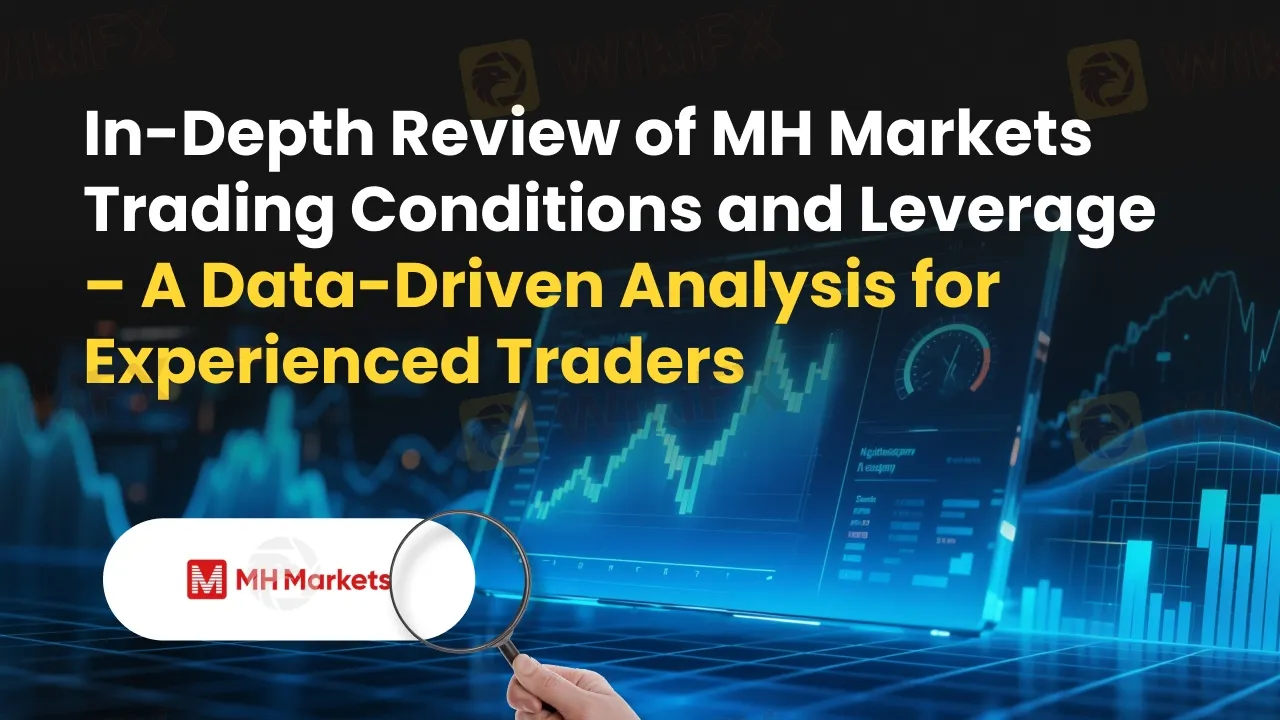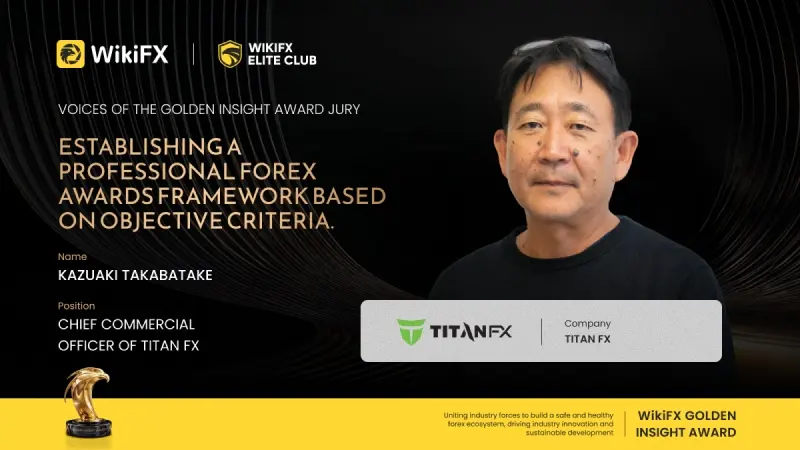In-Depth Review of MH Markets Trading Conditions and Leverage – An Analysis for Experienced Traders
Abstract:For experienced traders, selecting a broker is a meticulous process that extends far beyond marketing claims and bonus offers. It involves a granular analysis of the core trading environment: the quality of execution, the flexibility of leverage, the integrity of the regulatory framework, and the suitability of the conditions for one's specific strategy. MH Markets, a broker with a 5-10 year operational history, presents a complex and multifaceted profile that warrants such a detailed examination. This in-depth review dissects the MH Markets trading conditions and leverage, using primary data from the global broker inquiry app, WikiFX, to provide a clear, data-driven perspective. We will analyze the broker's execution environment, account structures, and regulatory standing to determine which types of traders might find its offering compelling and what critical risks they must consider.

For experienced traders, selecting a broker is a meticulous process that extends far beyond marketing claims and bonus offers. It involves a granular analysis of the core trading environment: the quality of execution, the flexibility of leverage, the integrity of the regulatory framework, and the suitability of the conditions for one's specific strategy. MH Markets, a broker with a 5-10 year operational history, presents a complex and multifaceted profile that warrants such a detailed examination.
This in-depth review dissects the MH Markets trading conditions and leverage, using primary data from the global broker inquiry app, WikiFX, to provide a clear, data-driven perspective. We will analyze the broker's execution environment, account structures, and regulatory standing to determine which types of traders might find its offering compelling and what critical risks they must consider.
Regulatory Framework and Trader Safety: A Mixed Picture
A broker's regulatory status is the bedrock of trader trust. MH Markets operates under a multi-jurisdictional framework that presents both strengths and significant points of caution.
According to data from WikiFX, MH Markets holds a Straight Through Processing (STP) license from the Australian Securities and Investments Commission (ASIC). For seasoned traders, an ASIC license is a significant credential. ASIC is a top-tier regulator known for its stringent requirements regarding client fund segregation, capital adequacy, and transparent business practices. The STP designation further suggests a commitment to a non-dealing desk execution model.
The broker's primary registration is in Mauritius, where it is regulated by the Financial Services Commission (FSC). While the FSC provides a formal regulatory structure, it is generally considered an offshore regulator and does not carry the same weight as tier-1 authorities such as ASIC.
However, traders must be aware of a critical risk alert issued by WikiFX. The platform notes that MH Markets “exceeds the business scope regulated by the United Arab Emirates SCA (license number: 20200000159) Investment Advisory Licence.” This means the broker may be offering services, such as CFD trading, that are not covered by its specific license in that region. This is a serious red flag, indicating potential compliance gaps and contributing to WikiFX's overall “Medium potential risk” assessment for the broker.
For traders, this complex regulatory landscape underscores the importance of conducting their own due diligence. Platforms like WikiFX can be invaluable for verifying a broker's current regulatory status and any associated risk alerts before committing funds. The entity under which a trader's account is registered will determine the level of protection and the trading conditions, including leverage, that apply.
MH Markets Trading Conditions and Leverage: The Core Offering
The central appeal for many traders considering MH Markets lies in its aggressive and flexible trading conditions, particularly its exceptionally high leverage.
Leverage and Margin: A Double-Edged Sword
MH Markets offers maximum leverage of up to an astonishing 1:2000, according to the brokers website. This level of leverage is exceedingly rare in the modern brokerage landscape, especially among brokers with any ties to tier-1 regulation.
• For the Aggressive Trader: Leverage of this magnitude allows traders to control very large positions with minimal capital. A 1:2000 ratio translates to a margin requirement of just 0.05%. This can be a powerful tool for experienced traders with a high-risk tolerance who aim to maximize their exposure in high-conviction trades. It can also be used by systematic traders to reduce the amount of capital held idle in a brokerage account.
• The Inherent Risk: It is crucial to understand that such high leverage is extremely dangerous. It magnifies not only potential profits but also losses. A small adverse price movement can trigger a margin call or a stop-out, liquidating a trader's entire position and potentially their account balance. This level of leverage is entirely unsuitable for beginners and requires disciplined risk management, including the diligent use of stop-losses, from even the most experienced market participants.
It is vital for traders to confirm the regulatory entity their account falls under, as leverage will be capped accordingly. The 1:2000 leverage is certainly not available under the ASIC-regulated entity, which imposes strict leverage limits (typically up to 1:30 for major forex pairs). This high leverage is offered through its offshore-regulated branches.
Available Instruments
MH Markets positions itself as a multi-asset broker, providing access to a comprehensive range of markets from a single account. Based on user feedback and public information, the available instruments include:
• Forex: A wide selection of major, minor, and exotic currency pairs.
• Global Indices: CFDs on major stock market indices from around the world.
• Equities: CFDs on shares of major global companies.
• Commodities: Both hard and soft commodities, including energies such as oil and natural gas.
• Precious Metals: Gold, silver, and other metals against the US dollar.
• Cryptocurrencies: Some sources indicate the availability of CFDs on popular digital currencies.
This broad selection is a significant advantage for traders who employ cross-market analysis or wish to diversify their strategies without needing multiple brokerage accounts.
A Deep Dive into MH Markets Account Types Trading Conditions
To cater to different trader profiles, MH Markets offers a tiered account structure. Analysis of user-provided data on WikiFX reveals three primary account types, each with distinct minimum deposits and implied trading conditions.
• Standard Account: With a minimum deposit of just $50, this account serves as the entry point. It is designed for new traders testing the platform or those with smaller capital bases. Trading conditions on a standard account typically involve wider, variable spreads with no commission per trade, as the broker's compensation is built into the spread.
• Prime Account: Requiring a $100 minimum deposit, the Prime account is a step up. It likely offers more competitive trading conditions than the Standard account, potentially featuring tighter spreads on key instruments. This account is aimed at traders who have moved beyond the initial testing phase and are ready to commit slightly more capital for an improved cost structure.
• ECN Account: With a $1,000 minimum deposit, the ECN account is tailored for serious, high-volume traders. This account type aligns with the broker's stated STP/ECN execution model. Traders can expect direct access to interbank liquidity, resulting in raw, ultra-thin spreads. In place of a spread markup, a fixed commission is charged per lot traded. This transparent pricing model is highly favored by scalpers and algorithmic traders who prioritize low entry and exit costs.
This tiered structure allows for scalability, enabling traders to start small and transition to more professional-grade accounts as their capital and experience grow.
Execution Environment: Speed, Slippage, and Stability
For active traders, the quality of the execution environment is paramount. WikiFX provides a detailed technical analysis of MH Markets' trading infrastructure, awarding it an overall “Environment A” rating, which is a strong score.
Execution Speed and Model
WikiFX's independent testing clocked MH Markets' average transaction speed at 248.4 ms, which it rates as “Perfect.” This is a solid speed, suitable for most trading styles, including day trading. While some users have anecdotally reported speeds “under 100ms,” the WikiFX figure provides a standardized, third-party benchmark.
The broker's use of an STP/ECN execution model is a significant positive. This model routes client orders directly to liquidity providers, theoretically eliminating broker intervention and reducing conflicts of interest. This should result in fairer pricing and fewer re-quotes.
Slippage and Costs
The WikiFX environment breakdown offers further insight:
• Slippage: AA Rating. This excellent score indicates that the deviation between the expected price of a trade and the actual execution price is minimal. Low slippage is critical during volatile market conditions and for strategies that rely on precise entry and exit points.
• Cost: B Rating. This rating suggests that while MH Markets' trading costs (spreads and commissions) are competitive, it may not be the absolute lowest in the industry. Traders, especially high-frequency ones, should weigh this “B” rating against the “AA” slippage and “Perfect” speed. It implies a potential trade-off between execution quality and raw cost.
The Disconnection Risk: A Major Concern
The most alarming metric in the WikiFX analysis is the “D” rating for Disconnected. This score indicates that during testing, the platform experienced a higher-than-average rate of server disconnections.
For a swing or position trader, a brief disconnection might be a minor annoyance. However, for a scalper, day trader, or anyone running an Expert Advisor (EA), frequent disconnections can be catastrophic. It can prevent the execution of new orders, the closing of existing ones, and the proper functioning of automated strategies, leading to missed opportunities or significant unexpected losses. This data point directly contradicts the image of a flawless, “lightning-fast” environment and is a critical risk factor that potential clients must consider. It also lends context to a negative user review on WikiFX complaining about a stop-loss order failing to trigger correctly, as platform instability can contribute to such issues.
Platforms and Tools: The MetaTrader Ecosystem
MH Markets provides access to the industry-standard MetaTrader suite, ensuring a familiar and powerful trading experience.
• MetaTrader 4 (MT4): WikiFX confirms that the broker holds a full license for the MT4 platform. Renowned for its stability, vast library of custom indicators, and robust support for automated trading via Expert Advisors (EAs), MT4 remains a favorite among forex traders.
• MetaTrader 5 (MT5): As confirmed by user reports and other sources, MT5 is also available. It offers all the core features of MT4 plus additional timeframes, more built-in technical indicators, and superior backtesting capabilities for EAs. It is often preferred for trading a wider range of CFDs, including stocks and commodities.
• WebTrader: For traders who need access on the go without installing software, a browser-based WebTrader is also provided.
Furthermore, the WikiFX data highlights the provision of a free VPS (Virtual Private Server) with no restrictions on the account. This is a valuable tool for algorithmic traders, as it allows their EAs to run 24/7 on a remote server with a stable, low-latency connection to the broker's trading servers, mitigating issues related to their local internet or computer shutting down.
Which Trader Profiles are Best Suited for MH Markets?
Synthesizing the data, we can profile the types of traders for whom MH Markets might be a fit, along with the associated caveats.
• Scalpers and Day Traders: The STP/ECN model, raw spreads on the ECN account, and “Perfect” transaction speed are highly attractive. However, the “D” rating for server disconnections is a major deterrent. These traders must weigh the potential for fast execution against the risk of platform instability.
• Swing and Position Traders: This group is less sensitive to millisecond execution speeds and brief disconnections. The wide range of instruments and the powerful MT4/MT5 platforms are strong positives, allowing them to manage a diversified portfolio of medium-to-long-term trades.
• Algorithmic Traders: The combination of MT4/MT5, an ECN environment, and a free VPS creates an ideal technical setup. Yet, the disconnection risk is a critical point of failure for automated systems. Extensive testing on a demo or small live account is non-negotiable.
• Beginners: The low $50 minimum deposit is welcoming. However, the availability of 1:2000 leverage is a significant danger to inexperienced traders. Combined with the regulatory risk alert from WikiFX, beginners should approach this broker with extreme caution.
Conclusion: A Broker of High Leverage and Notable Contradictions
MH Markets presents itself as a broker built for the modern, aggressive trader. Its core offering—extremely high leverage, a true STP/ECN model, and a broad asset range on the robust MetaTrader platforms—is undeniably compelling. The “A” rated environment with fast transaction speeds and low slippage further strengthens its case.
However, this profile is marked by significant contradictions. The allure of 1:2000 leverage is shadowed by the immense risk it carries. The strong execution metrics are undermined by a worrying “D” rating for server stability. The credibility of an ASIC license is juxtaposed with a formal risk alert for overstepping its regulatory scope in the UAE.
These factors paint a picture of a broker that may deliver a high-performance environment but comes with operational and regulatory risks that cannot be overlooked. It is best suited for experienced, well-capitalized traders who understand how to manage the risks of high leverage and can tolerate potential platform instability.
To know more about MH Markets, join this dedicated chat group (OIFSYYXKC3) by following the instructions shown below.

Read more

MH Markets Commission Fees and Spreads Analysis: A Data-Driven Breakdown for Traders
For any experienced trader, the long-term viability of a brokerage partner hinges on a delicate balance of trust, execution quality, and, critically, cost. Trading fees, both direct and indirect, can significantly erode profitability over time. This makes a granular understanding of a broker's cost structure not just beneficial, but essential. This in-depth analysis focuses on MH Markets, breaking down its commission fees, spreads, and other associated costs to provide a clear, data-driven perspective for traders evaluating this broker for their long-term strategies. Drawing primarily on verified data from the global broker inquiry platform WikiFX, alongside other public information, we will dissect the MH Markets spreads commissions cost structure. We aim to move beyond marketing claims and uncover the practical, real-world costs of trading with this broker, helping you determine if its pricing model aligns with your trading style and financial goals.

Is Tio Markets Legit? Detailed Review with Real User Complaints
So, we will begin this Tio Markets review with the key topic—its regulation and the authorities it is licensed under. After that, we will walk you through the real user complaints we found during our research.

S.A.M. Trade Under Scrutiny: Withdrawal Denials, Questionable Spreads & Complaints from Traders
Did you find MT4 platform glitches while trading via S.A.M. Trade? Did these glitches disallow you from withdrawing your funds or making an internal transfer? Finding profit on the S.A.M. Trade login, but cannot access it for weeks? Did you fail to withdraw because the authorities found the broker suspicious during their investigation? Have you faced increased trading costs due to manipulated spreads? Many traders have expressed similar concerns while sharing the broker’s review online. In this article, we have decoded S.A.M. Trade reviews. Take a look!

Voices of the Golden Insight Award Jury | Kazuaki Takabatake, CCO of Titan FX
WikiFX Golden Insight Award uniting industry forces to build a safe and healthy forex ecosystem, driving industry innovation and sustainable development, launches a new feature series — “Voices of the Golden Insight Awards Jury.” Through in-depth conversations with distinguished judges, this series explores the evolving landscape of the forex industry and the shared mission to promote innovation, ethics, and sustainability.
WikiFX Broker
Latest News
GCash Rolls Out Virtual US Account to Cut Forex Fees for Filipinos
WikiFX's New Evaluation of ATM Capital LTD: Does its License Protect the Arab Investor?
How a Fake Moomoo Ad Led to the “New Dream Voyage 5” Scam
Is Axi Legit? A Data-Driven Analysis of Its Regulatory Standing and Trader Feedback
Trive Investigation: High Score, Hidden Risk - The Profit Paradox
In-Depth Uniglobe Markets Commission Fees and Spreads Analysis – What Traders Should Really Know
FXPesa Review: Are Traders Facing High Slippage, Fund Losses & Withdrawal Denials?
CMC Markets Australia Revenue Surges 34%, But High-Net-Worth Clients Face Tax Phishing Threat
The 350 Per Cent Promise That Cost Her RM604,000
INZO Commission Fees and Spreads Breakdown: A 2025 Data-Driven Analysis for Traders
Rate Calc


